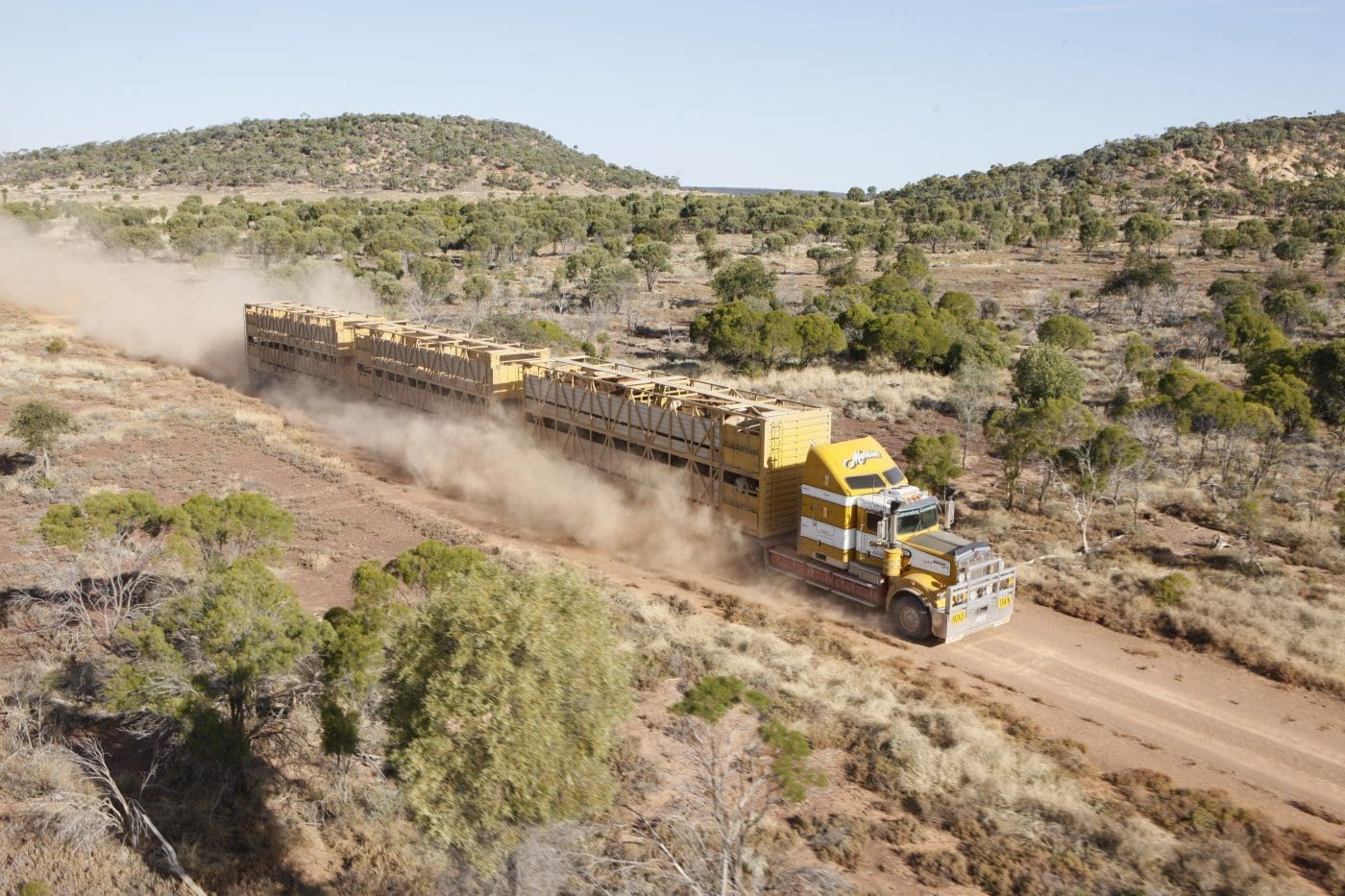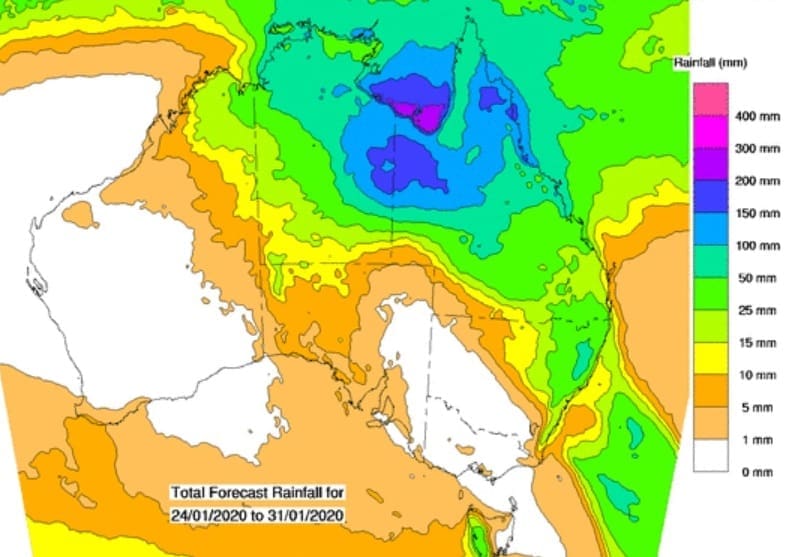
SMALL inflows of livestock are likely to be directed into the Northern Territory pastoral zone over coming months, as the region begins its long and arduous recovery phase after two years of severe drought.
After successive drought years in 2018 and 2019, including some annual rainfall registrations as the lowest on record, close to one million head of cattle are estimated to have been removed from the NT beef herd, one credible pastoral company source told Beef Central yesterday.
Within that, some 800,000 cattle had been removed across the region – either transported internally to other company properties interstate; placed on agistment; sold for slaughter or live export; or sold into the store market. Some individual operators on the Barkly last year sent 40,000 to 50,000 head of cattle from the region (see earlier report).
On top of that, up to 150,000 NT cattle may have succumbed to drought conditions last year, leaving the NT currently with about half its normal one-time carrying capacity of 1.8 to 2.2 million head. Statistically, at least, the NT region has arguably been the hardest-hit of all in the continental scale drought experienced since 2017.
However the dynamics have started to change, with some encouraging January storm rain recorded across key northern cattle areas in the past week, and some highly encouraging forecasts for the next eight days issued by BOM, starting to look like a traditional late wet.
Best of the rainfall over the past week has been seen in the Territory’s top end, with pastoral regions on the Barkly and VRD receiving mostly lighter falls.
On AA Co’s Brunette Downs station in the central Barkly region, 78mm has been recorded so far for January, compared with just 16mm for January last year – the driest on record. The last ‘good’ year on Brunette was in 2017, when January delivered 224mm of rain.
Generally AA Co’s Barkly region holdings have received from 24mm to 63mm in the past week, with good prospects of substantially more for the week ahead.
In the Victoria River district, Delemere has received 16mm this week and 127mm so far for January; Camfield 70mm for the month to date, and Montejinni 175mm for January so far.
Additionally, large parts of the Barkly Tablelands, Northwest Queensland and the top-end are forecast to receive 50-150mm of rain over the next eight days with a tropical low projected to deliver thunderstorms and heavy rainfall, BOM says.
For the period since the theoretical start of the northern wet season in October, Consolidated Pastoral Co’s Carlton Hill on the VRD has received 370mm (43pc of its normal full wet-season total already, mostly falling in the past ten days). Manbulloo near Katherine is CPC’s driest this year on a percentage basis, having received 145mm since October, or 16pc of its normal wet season total. Bunda on the VRD has recorded 160mm (already 25pc of wet season average rain); and Newcastle Waters on the Barkly 135mm, or 22pc of its average wet season total.
Particularly the central and eastern Barkly regions – which have been at the epi-centre of the drought impact zone over the past two years – look like picking up the best of the anticipated falls over the next eight days (see map.)

Click on image to enlarge
In Central western Queensland, CPC’s Isis Downs, near Isisford, has already received half of its normal wet season total, recording 131mm so far.
Restocking movements on the way
Pastoral companies spoken to yesterday said if it stopped raining in February, pasture conditions would not be good enough to start a ‘mad rush’ of cattle back into the region, but at this stage at least, conditions looked promising.
“Regardless of what happens now, it will be a whole lot better than last year,” one major landholder said yesterday.
“We’re getting close, but the next five to six weeks will be crucial, in terms of grass growth.”
Small cattle movements are expected to start in coming months, as the NT’s pastoral regions begin the long road back after two back-to-back years of drought.
CPC has confirmed that it plans to send 18 decks of weaners out of Queensland in mid-February, based on the rain that has been received so far.
“I think restocking the territory this year will be slow and steady, rather than a mad rush,” CPC’s chief executive Troy Setter said yesterday.
“We’re likely to send some breeders in to the Barkly from agistment in Queensland and our holdings around Katherine in April, May and June, but the number will depend very much on what happens weather-wise from here,” he said.
North Australian Pastoral Co chief executive Richard Brimblecombe said scattered showers and thunderstorms had been received this month on the company’s extensive Alexandria station in the Barkly region.
“We haven’t had what you’d call quality general rain at this stage, but the forecast for the next eight days looks very promising,” he said.
“We’re still a long way from what could be described as a decent wet, but subject to some decent rain over the next week, things may start to change. We desperately need some monsoonal rain at Alex to get the season underway.”
Mr Brimblecombe said NAPCo was in a good position, overall, having received good beneficial flooding across its Channel Country holdings earlier last year.
“It allowed us to shift a lot of cattle off Alexandria as the conditions deteriorated, preserving most of our breeder base,” he said.
While it was still too early to be talking about substantial inflows of those cattle back onto the Barkly again, on the assumption that some sort of monsoonal influence was seen in coming months, that might start around April or May.
“We’ll wean this year’s calves off those breeders down in the Channel Country, and send the breeders back north. It means we can hit the ground running, in terms of productivity, rather than having to buy our way back into the market,” he said.
Mr Brimblecombe said Alex’s normal herd of around 80,000 breeders had been cut by about half, as a result of successive drought years in 2018-19. Most surrounding Barkly properties were in a similar boat.
“We’d like to see the pasture start to come away a little before we start putting cattle on it,” he said.
While some large northern pastoral companies had sent very large numbers of breeders to slaughter, others had worked hard to retain a nucleus breeding herd.
“I think most pastoral companies will try to breed their numbers back up, rather than simply going into the market and purchasing breeders in big volume,” one contact said.
“With breeding females carrying some bos indicus worth well over $1000 each in Central Queensland before transport, restocking the Barkly and VRD with bought females could be a very expensive exercise,” he said.
Even cull heifers for the boat trade were making 300c/kg or $1000 ex Darwin, making purchase for restocking and breeding prohibitive.
“And given the expenses associated with feeding costs and transport costs associated with drought last year, not too many pastoral companies will have a balance sheet that allows them to go out into the market and buy 20,000 or 30,000 breeders.”
With a surplus of grass in the NT this year due to low stocking rates, one trend might be holding onto steers longer to make them more attractive to the Vietnamese heavy slaughter steer trade, one source suggested.



HAVE YOUR SAY